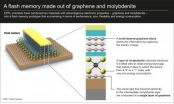(Press-News.org) One of the most southerly populations of polar bears in the world – and the best studied – is struggling to cope with climate-induced changes to sea ice, new research reveals. Based on over 10 years' data the study, published in the British Ecological Society's Journal of Animal Ecology, sheds new light on how sea ice conditions drive polar bears' annual migration on and off the ice.
Lead by Dr Seth Cherry of the University of Alberta, the team studied polar bears in western Hudson Bay, where sea ice melts completely each summer and typically re-freezes from late November to early December. "This poses an interesting challenge for a species that has evolved as a highly efficient predator of ice-associated seals," he explains. "Because although polar bears are excellent swimmers compared with other bear species, they use the sea ice to travel, hunt, mate and rest."
Polar bears have adapted to the annual loss of sea ice by migrating onto land each summer. While there, they cannot hunt seals and must rely on fat reserves to see them through until the ice returns.
Dr Cherry and colleagues wanted to discover how earlier thawing and later freezing of sea ice affects the bears' migration. "At first glance, sea ice may look like a barren, uniform environment, but in reality, it's remarkably complex and polar bears manage to cope, and even thrive, in a habitat that moves beneath their feet and even disappears for part of the year. This is an extraordinary biological feat and biologist still don't fully understand it," he says.
From 1991-97 and 2004-09, they monitored movements of 109 female polar bears fitted with satellite tracking collars. They tagged only females because males' necks are wider than their heads, so they cannot wear a collar. During the same period, the team also monitored the position and concentration of sea ice using satellite images.
"Defining precisely what aspects of sea ice break-up and freeze-up affect polar bear migration, and when these conditions occur, is a vital part of monitoring how potential climate-induced changes to sea ice freeze-thaw cycles may affect the bears," he says.
The results reveal the timing of polar bears' migration can be predicted by how fast the sea ice melts and freezes, and by when specific sea ice concentrations occur within a given area of Hudson Bay.
According to Dr Cherry: "The data suggest that in recent years, polar bears are arriving on shore earlier in the summer and leaving later in the autumn. These are precisely the kind of changes one would expect to see as a result of a warming climate and may help explain some other studies that are showing declines in body condition and cub production."
Recent estimates put the western Hudson Bay polar bear population at around 900 individuals. The population has declined since the 1990s, as has the bears' body condition and the number of cubs surviving to adulthood.
Because polar bears' main food source is seals, and these are hunted almost exclusively on sea ice, the longer bears spend on land, the longer they must go without energy-rich seals. "Climate-induced changes that cause sea ice to melt earlier, form later, or both, likely affect the overall health of polar bears in the area. Ultimately, for polar bears, it's survival of the fattest," says Dr Cherry.
He hopes the results will enable other scientists and wildlife managers to predict how potential climate-induced changes to sea ice freeze-thaw cycles will affect the ecology, particularly the migration patterns, of this iconic species.
INFORMATION:
Seth Cherry et al (2013). 'Migration phenology and seasonal fidelity of an Arctic marine predator in relation to sea ice dynamics', doi: 10.1111/1365-2656.12050, is published in the Journal of Animal Ecology on Wednesday 20 March 2013.
For polar bears, it's survival of the fattest
2013-03-20
ELSE PRESS RELEASES FROM THIS DATE:
Caffeine 'can significantly protect against crash risk' for long distance heavy vehicle drivers
2013-03-20
Research: Use of caffeinated substances and risk of crashes in long distance drivers of commercial vehicles: case-control study
Long distance commercial drivers who consume caffeinated substances such as coffee or energy drinks, to stay awake while driving, are significantly less likely to crash than those who do not, even though they drive longer distances and sleep less, finds a study published today on bmj.com.
Long distance drivers routinely experience monotonous and extended driving periods in a sedentary position, which has been associated with wake time drowsiness, ...
'Kill Bill' character inspires the name of a new parasitoid wasp species
2013-03-20
Parasitoid wasps of the family Braconidae are known for their deadly reproductive habits. Most of the representatives of this group have their eggs developing in other insects and their larvae, eventually killing the respective host, or in some cases immobilizing it or causing its sterility. Three new species of the parasitoid wasp genus Cystomastacoides, recently described in the Journal of Hymenoptera Research, reflect this fatal behavior.
Two of the new species were discovered in Papua New Guinea, while the third one comes from Thailand. The Thai species, Cystomastacoides ...
Max Planck Florida Institute study points to major discovery for Alzheimer's disease
2013-03-20
FLORIDA, March 19, 2013 – The Journal of Neuroscience has published a study led by researchers at the Max Planck Florida Institute for Neuroscience, the first and only U.S. extension of the prestigious Max Planck Society, that may hold a stunning breakthrough in the fight to treat Alzheimer's disease. The study potentially identifies a cause of Alzheimer's disease—based on a newly-discovered signaling pathway in cellular models of Alzheimer's disease—and opens the door for new treatments by successfully blocking this pathway. The Institute, which recently opened in December ...
First of its kind study in Canada looks at who is taking aspirin to prevent heart attack or stroke
2013-03-20
A new study out of the Faculty of Medicine & Dentistry shows a large population of healthy people are taking Aspirin to prevent cardiovascular disease, despite the fact that new literature shows it isn't as beneficial as once thought.
Olga Szafran and Mike Kolber, in the Department of Family Medicine at the University of Alberta, surveyed patients over the age of 50 at two clinics in Alberta. They found that more than 40 per cent of people who don't suffer from cardiovascular disease are popping pills daily to prevent a heart attack or stroke – a practice called primary ...
More career options may explain why fewer women pursue jobs in science and math
2013-03-20
Women may be less likely to pursue careers in science and math because they have more career choices, not because they have less ability, according to a new study published in Psychological Science, a journal of the Association for Psychological Science.
Although the gender gap in mathematics has narrowed in recent decades, with more females enrolling and performing well in math classes, females are still less likely to pursue careers in science, technology, engineering, and mathematics (STEM) than their male peers.
Researchers tend to agree that differences in math ...
Fantastic flash memory combines graphene and molybdenite
2013-03-20
After the molybdenite chip, we now have molybdenite flash memory, a significant step forward in the use of this new material in electronics applications. The news is even more impressive because scientists from EPFL's Laboratory of Nanometer Electronics and Structures (LANES) came up with a truly original idea: they combined the advantages of this semiconducting material with those of another amazing material – graphene. The results of their research have recently been published in the journal ACS Nano.
Two years ago, the LANES team revealed the promising electronic ...
Are survivors of childhood leukemia and lymphoma at greater risk of chronic fatigue as adults?
2013-03-20
New Rochelle, NY, Mar 19, 2013—Chronic fatigue, a persistent lack of energy that does not improve with rest, is at least three times more prevalent among adult survivors of acute lymphoblastic leukemia and lymphoma experienced during childhood or adolescence than in the general adult population, according to an article in Journal of Adolescent and Young Adult Oncology (JAYAO), (http://www.liebertpub.com/JAYAO) a multidisciplinary peer-reviewed publication from Mary Ann Liebert, Inc., publishers. (http://www.liebertpub.com) JAYAO is the Official Journal of the Society for ...
Biennial mammograms best after 50, even for women with dense breasts
2013-03-20
Screening for breast cancer every two years appears just as beneficial as yearly mammograms for women ages 50 to 74, with significantly fewer "false positives" – even for women whose breasts are dense or who use hormone therapy for menopause.
That is the finding of a new national study involving more than 900,000 women.
The study was published on March 18 in JAMA Internal Medicine.
The same team of researchers from UC San Francisco and Seattle-based Group Health Research Institute recently reported similar results for older women ages 66 to 89 years old.
By contrast, ...
Record simulations conducted on Lawrence Livermore supercomputer
2013-03-20
LIVERMORE, Calif. -- Researchers at Lawrence Livermore National Laboratory have performed record simulations using all 1,572,864 cores of Sequoia, the largest supercomputer in the world. Sequoia, based on IBM BlueGene/Q architecture, is the first machine to exceed one million computational cores. It also is No. 2 on the list of the world's fastest supercomputers, operating at 16.3 petaflops (16.3 quadrillion floating point operations per second).
The simulations are the largest particle-in-cell (PIC) code simulations by number of cores ever performed. PIC simulations ...
To make health systems more effective, physicians say time is now for clinician-led innovation
2013-03-20
(Boston) –Physician experts in health system issues propose a timely alternative process for harnessing and supporting physician-led innovations to rapidly address front-line health care delivery problems and improve health. Published as a Viewpoint article in the March 20th issue of the Journal of the American Medical Association (JAMA), the authors propose health systems adopt a strategy widely accepted in U.S. industries of "user-led" innovation.
User-led innovation is predicated on the idea that important enhancements to products and services are often made by users ...





